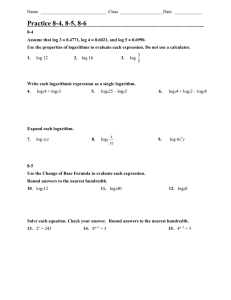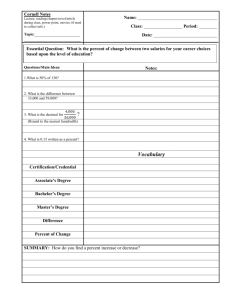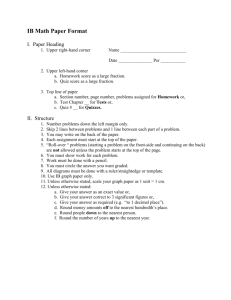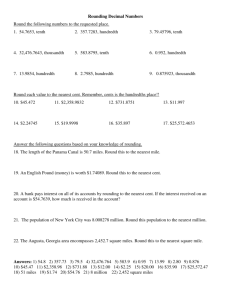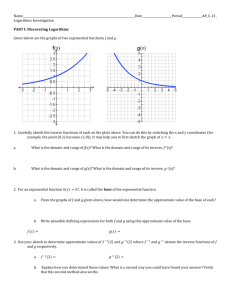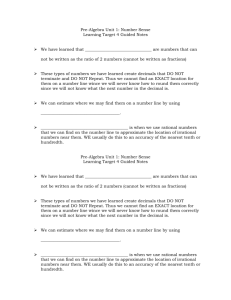Quiz 8-4, 8-5, 8-6
advertisement
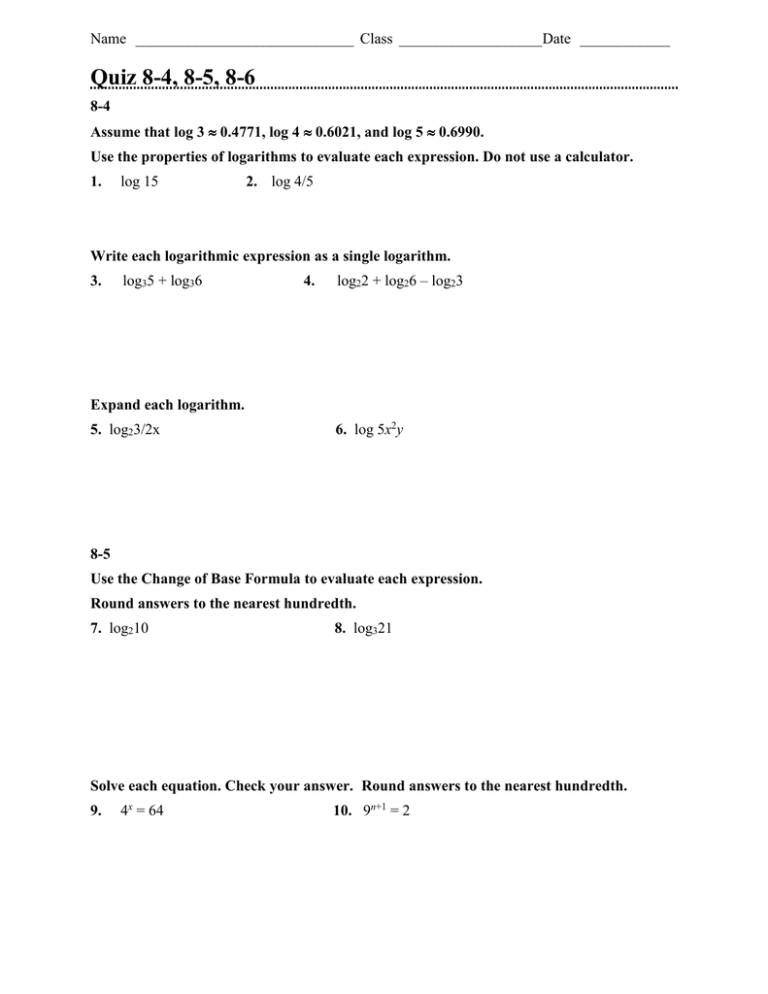
Name _____________________________ Class ___________________Date ____________ Quiz 8-4, 8-5, 8-6 8-4 Assume that log 3 0.4771, log 4 0.6021, and log 5 0.6990. Use the properties of logarithms to evaluate each expression. Do not use a calculator. 1. log 15 2. log 4/5 Write each logarithmic expression as a single logarithm. 3. log35 + log36 4. log22 + log26 – log23 Expand each logarithm. 5. log23/2x 6. log 5x2y 8-5 Use the Change of Base Formula to evaluate each expression. Round answers to the nearest hundredth. 7. log210 8. log321 Solve each equation. Check your answer. Round answers to the nearest hundredth. 9. 4x = 64 10. 9n+1 = 2 Solve each equation. Check your answer. Round answers to the nearest hundredth. 12. 3 log x – log 4 = –5 11. log 4x = 6 8-6 t The formula P 50e 25 gives the power output P, in watts, available to run a certain satellite for t days. Find how long a satellite with the given power output will operate. Round answers to the nearest hundredth. 13. 12 W The formula for the maximum velocity v of a rocket is v = c ln R, where c is the velocity of the exhaust in km/s and R is the mass ratio of the rocket. A rocket must reach 7.8 km/s to attain a stable orbit. Round answers to the nearest hundredth. 14. Find the maximum velocity of a rocket with a mass ratio of about 16 and an exhaust velocity of 3.2 km/s. Can this rocket achieve a stable orbit? Use natural logarithms to solve each equation. Round answers to the nearest hundredth. 15. 2ex = 12 16. ex+3 = 40 Solve each equation. Check your answer. Round answers to the nearest hundredth. 17. 3 ln x = –9 18. 4 ln (4x – 6) = –12 Write each expression as a single natural logarithm. 20. ln 14 – ln 2 21. 3 ln 3 + ln 9 19. ln 2x + ln 3x = 14
